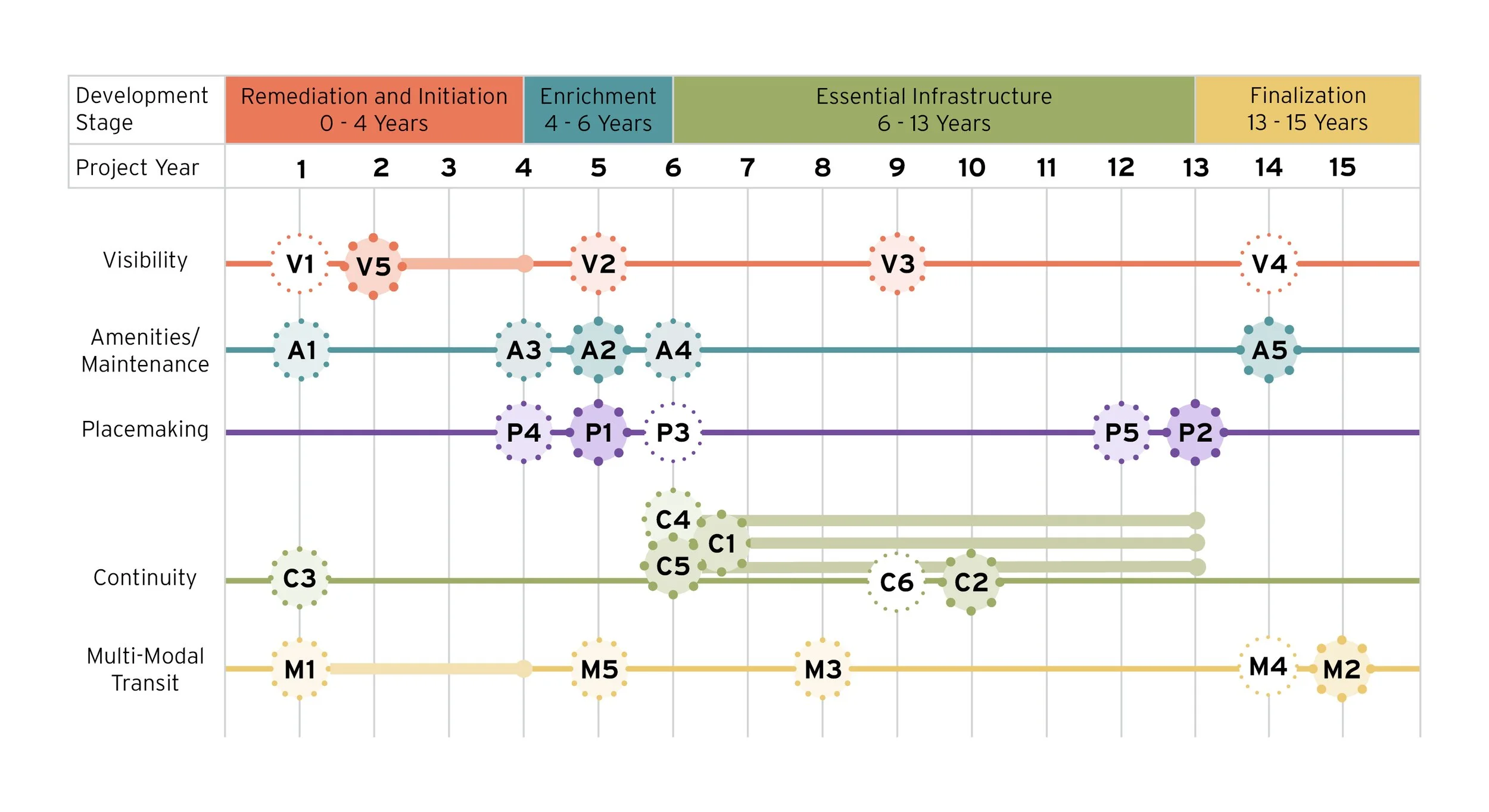Mill Creek Access Plan Studio
Summer 2021
This work explores what multi-modal access along the Mill Creek in Cincinnati could look like and how increased access would help make this waterway a greater asset for the surrounding neighborhoods, the city, and the region.
What is Access?
This project takes a multi-dimensional view of access as not only a physical attribute but also a perceptual experience.
Furthermore, this project looks at access at every scale from micro (ramps and crosswalks) to macro (compatible land uses).
This plan addresses the physical environment while also making the creek an asset that residents of the corridor can take pride in and actively seek out for recreation.
Project Timeline
This project management chart displays the overall timeline for the project, the action initiatives, the relative impact of each action, and the duration of each action.
Project Design
The final design for the multi-use path follows alongside the Mill Creek as closely as possible. This waterway offers a wide variety of distinctly urban landscapes. This trail allows people to walk or bike through wooded areas, charming neighborhoods, and centers of industry all while connecting to a historic natural resource.
Multi-Use Trail Installation
The largest aspect of this access plan is the multi-use path along the Mill Creek and in surrounding neighborhoods. Beautiful paths encourage active transportation and can be a great asset to economic development in communities. These maps explore the implementation phasing of the path.
This path connects to the Carthage business district to generate interest in the low-income community with many independent studios and galleries, family-owned stores, Hispanic restaurants and grocery stores, and more. Adding the path and streetscaping elements would decrease the heat island effect, improve stormwater retention, and encourage investment in local businesses.
One of the challenges of the trail on this scale is the potential for displacement of long-term, low-income residents as the area becomes more desirable. As such, investment in the Affordable Housing Trust Fund and similar efforts to preserve affordability would be key to promote equity.






